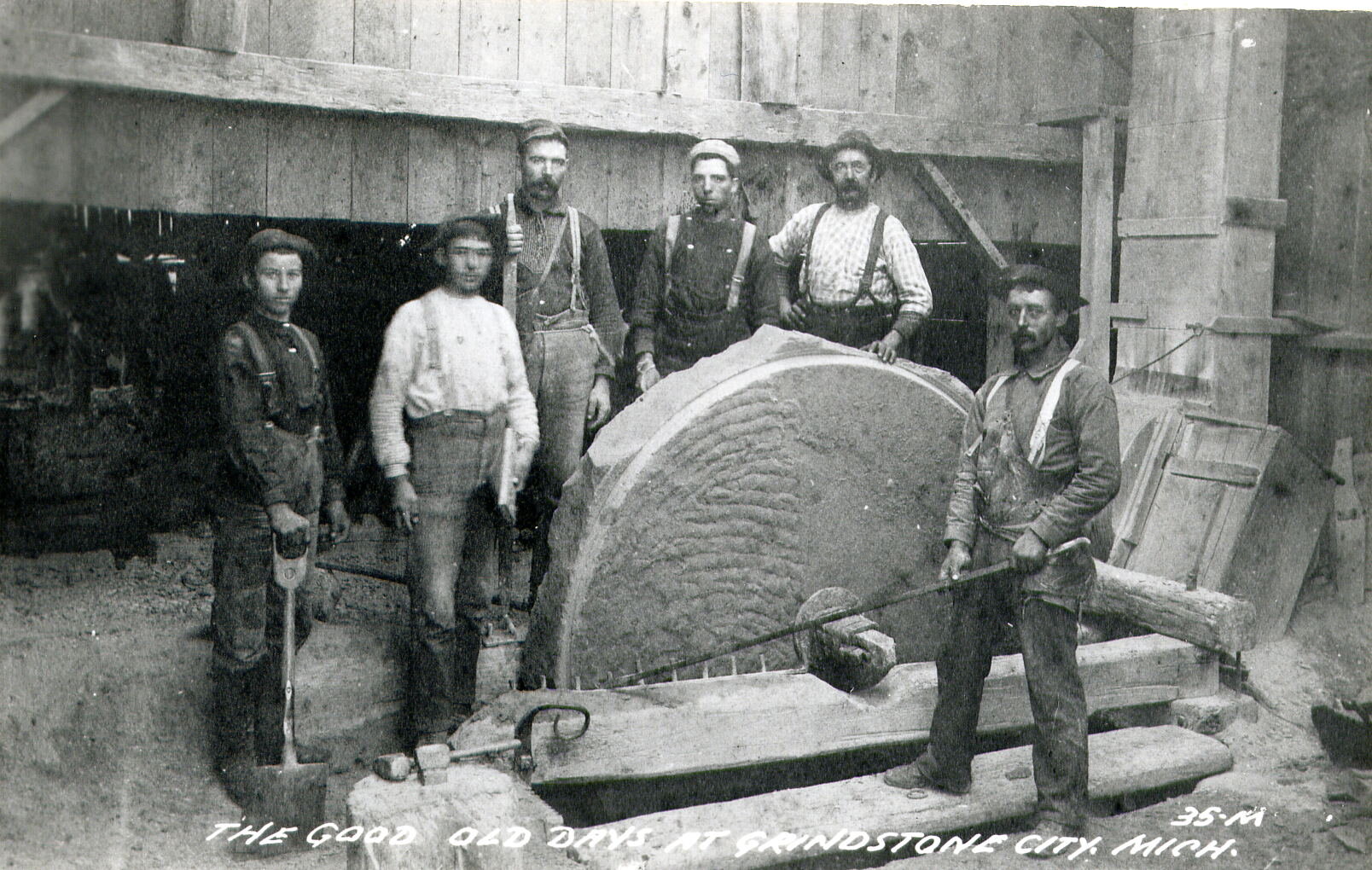
HISTORY
Grindstone City
It all began in 1834, when a storm forced schooner captain Aaron Peer of the Rip Van Winkle, to take refuge in the natural harbor near what is now known as Pointe Aux Barques.
Once anchored, he and the crew spotted an abundance of peculiar, flat stones scattered about the shoreline. Out of curiosity, Captain Peer took samples of the stone to Detroit where he later learned of its value. This highly abrasive gritstone was discovered to possess properties that made it superior to other stones on the market becoming highly favored and sought after for building, grinding, and sharpening. It is said that grindstone was first used as a building material to pave a few blocks on Jefferson and Woodward avenues in Detroit.
Captain Aaron Peer and others took an interest in establishing quarries in the area and turned the quarrying and milling of these grindstones into a renowned industry that spanned the globe and carried on for nearly a century. At one time, grindstones of all shapes and sizes up to 3-½ tons were exported from what is now known as the points in Grindstone Harbor. At the time those points were actually loading docks that stretched out well into Lake Huron, approximately 2,900-foot from shore. The points are now only a fraction of what they were when Cleveland Stone Company and Wallace Company would export the stones to Canada, Germany, Russia, Africa, and many other places around the world.
A short time after the First World War, the industry faded away as carborundum took its place. At the corner of Copeland and Rouse Roads is a large grindstone that stands as a monument to honor the pioneers who settled in the area and worked in the quarrying and carving of these unique stones.
Although its popularity in the building industry has long since come to an end, grindstone continues to be a cornerstone in our community. Many remnants of its significance remain to be found throughout Grindstone City. While actual grindstones mark the shoreline and areas nearby or commemorate local homes and businesses, its legacy continues to shape our community.



















